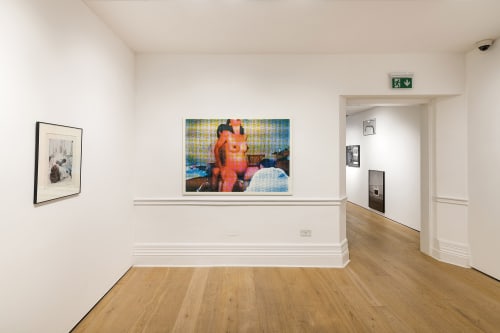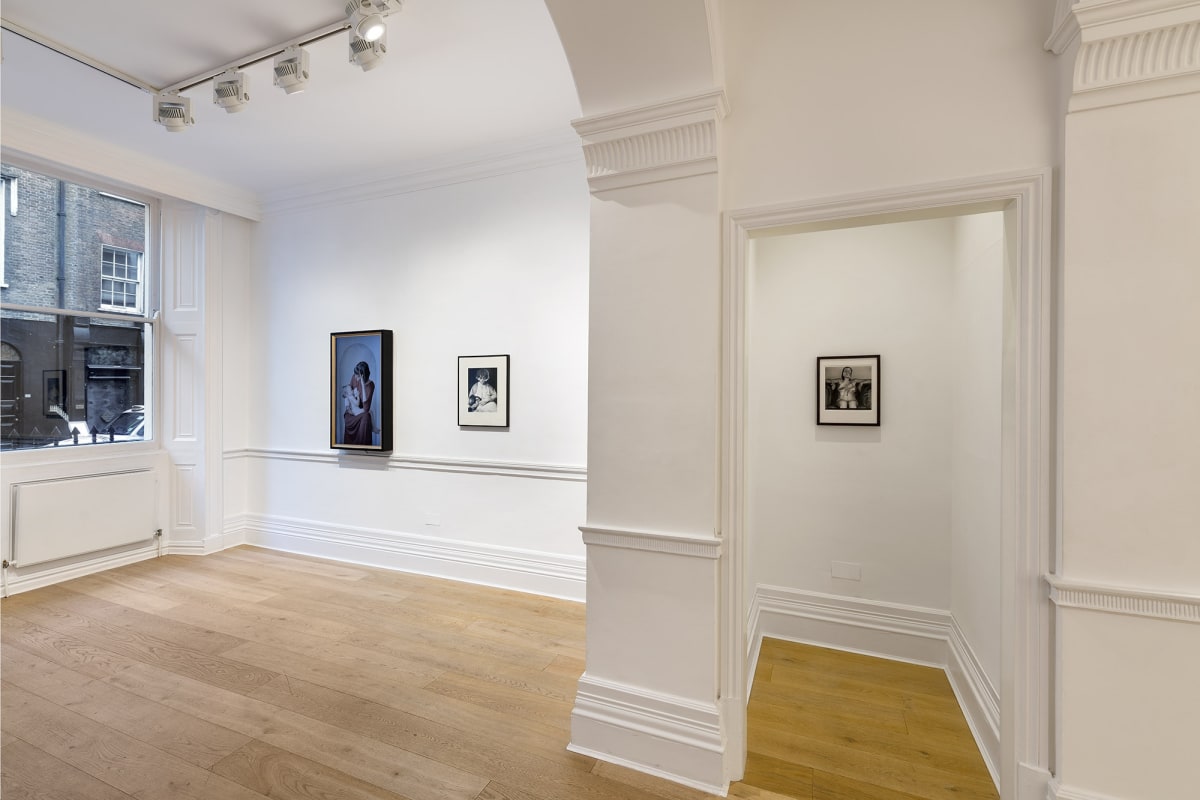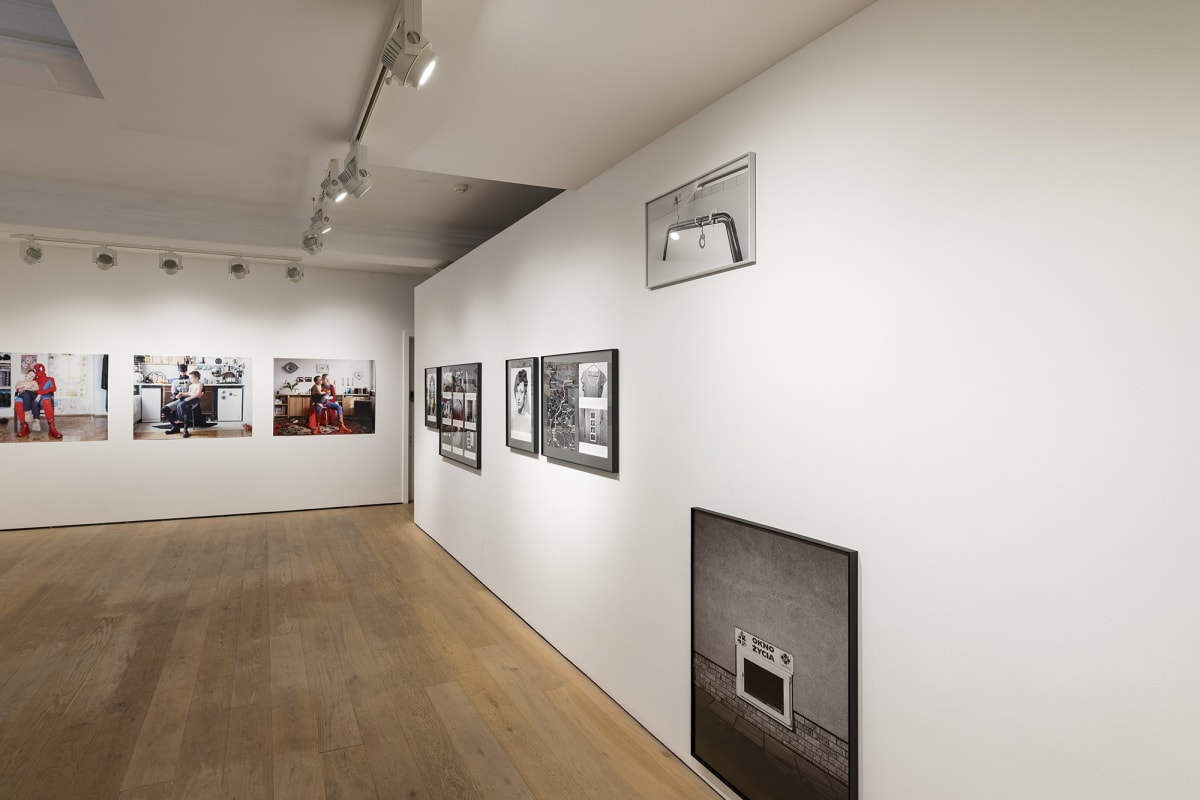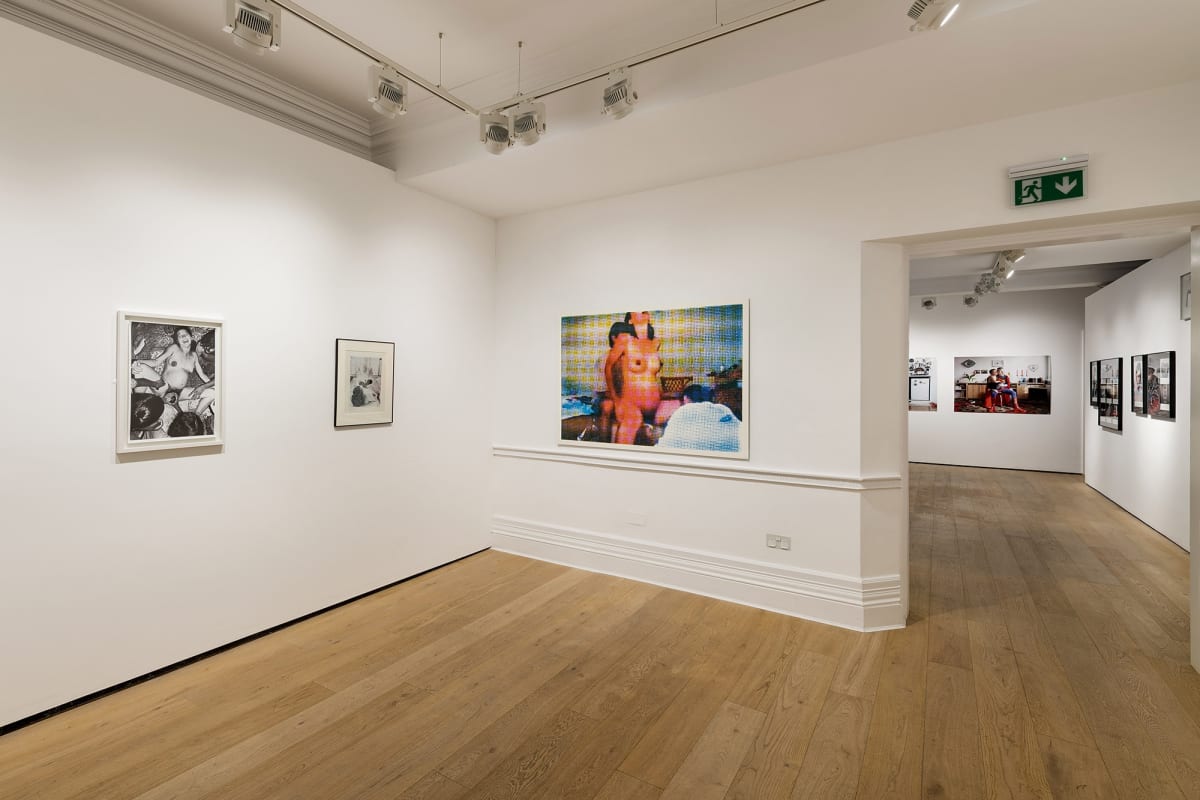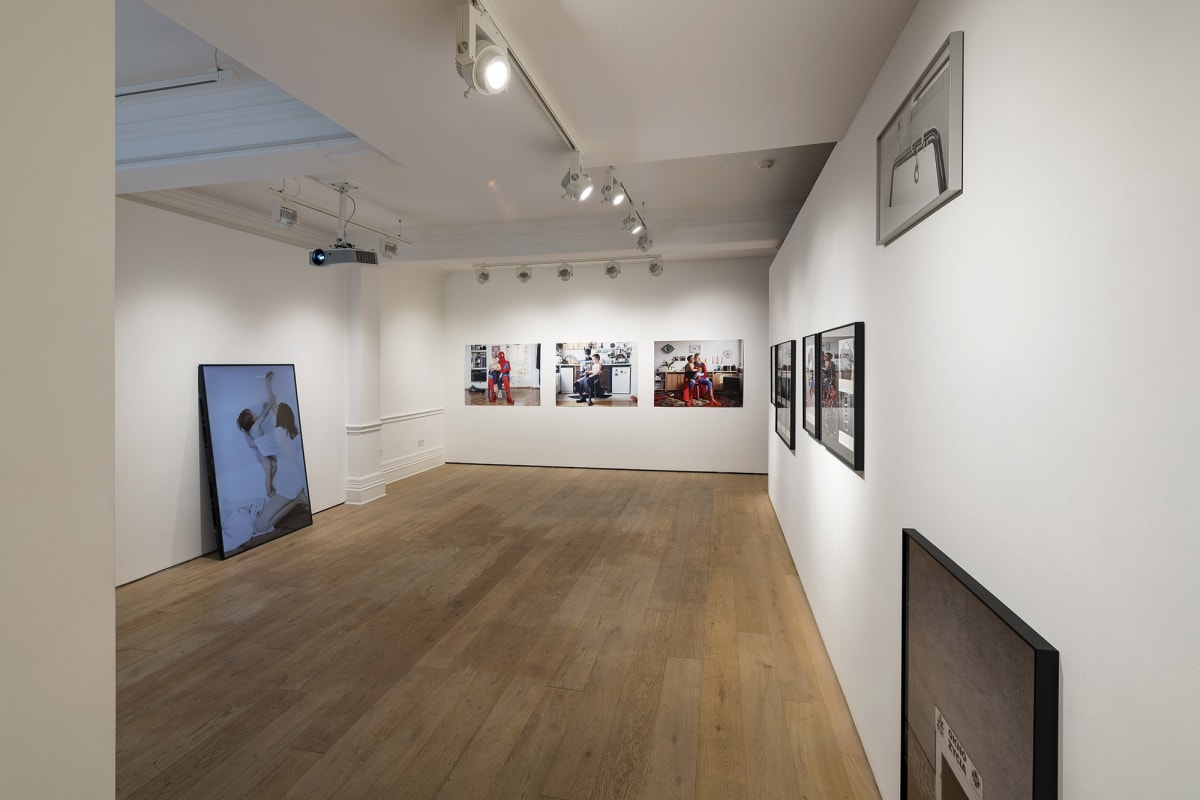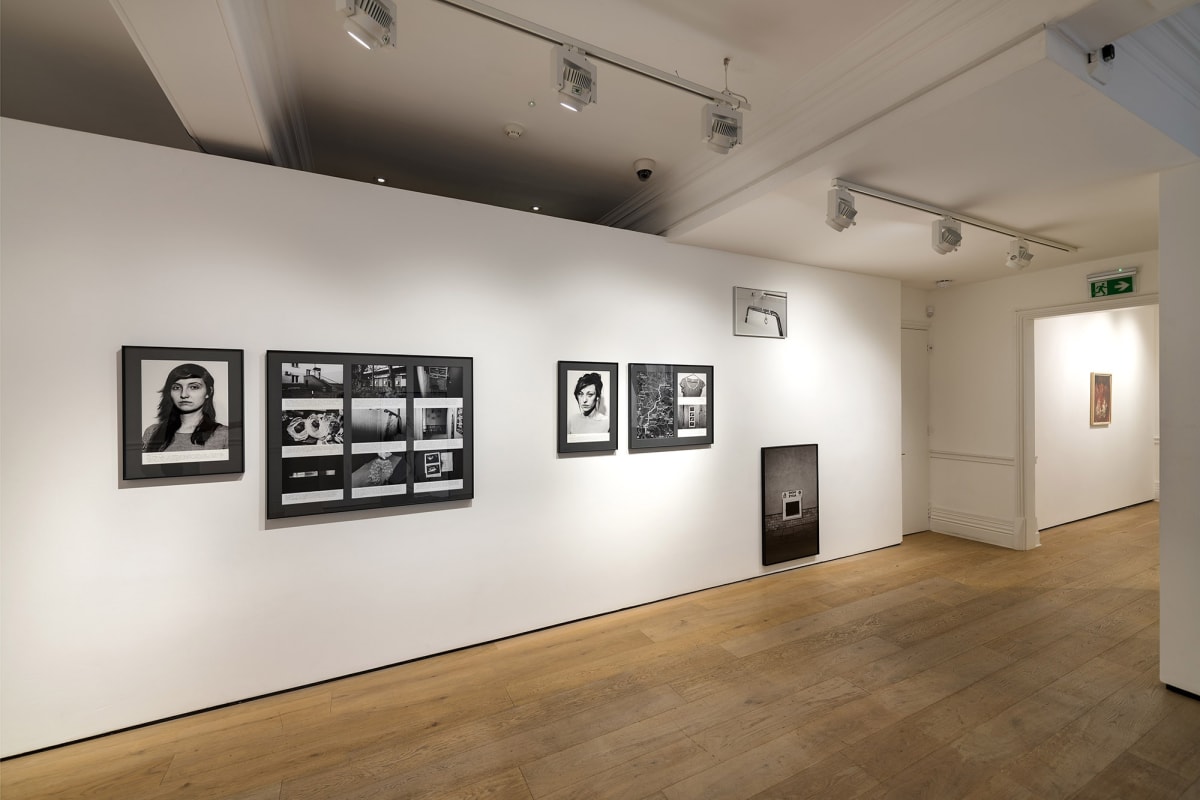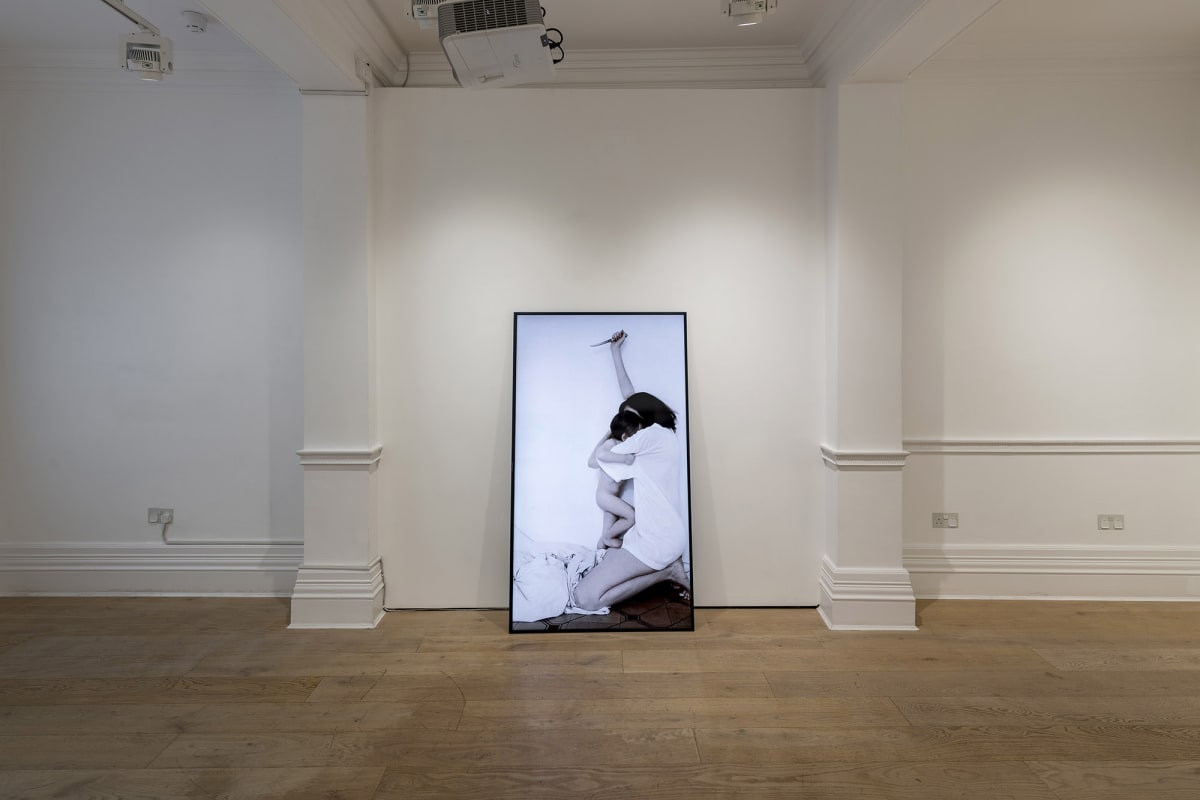Matrescence: Part 1
- On the night of the private view volunteers from the public were invited to take part in Liv PENNINGTON's Private View performance, which included taking a pregnancy test. The results were relayed in real-time, anonymously.
Catherine McCormack, academic and expert in the field of maternal themes in art, curates a two-part exhibition exploring maternal experience and subjectivity.
The first exhibition explores the idea of ‘matrescence,’ a term developed byanthropologist Dana Raphael in 1973 in an attempt to theorise the transitional period of shifting the body and psyche in the process of becoming a mother, one that is never fully resolved. The curatorial themes for this show stem from a radical rethinking of the eponymous archetype of the silent, suffering and idealised mother as represented in Christian iconography as the Virgin Mother and child Jesus. This is continued in the theme of maternity/obscenity, which explores how images made around the subject of childbirth are heavily policed and censored, and how the maternal body in this powerful moment is very often eclipsed and erased or thought to be obscene, monstrous, even pornographic.
The remaining themes in the first show probe the territory of loss, obsolescence and negation of ‘mothering,’ whether through abortion or maternal death and obstetric violence, both areas that have come under increased political scrutiny. The exhibition also draws attention to the notion of the public and private reproductive body, with work that asks questions about the state versus the individual’s right to decide on contested practices such as abortion or access to fertility treatments and the visibility of pregnant mothers in the public arena.
—Catherine McCormack
The first in a two-part exhibition on maternal politics, identity and embodiment, ‘Matrescence’ will bring together an international range of works from immediately contemporary artists with an older generation of artists to address the unresolved issues around maternal subjectivity, embodiment and politics; issues that remain as pertinent today as when they were first explored in the 1970s. The group show explores the idea of ‘Matrescence,’ a term developed by anthropologist Dana Raphael in 1973 in an attempt to theorise the transformational processes of becoming a mother – one that is never really fully resolved.
Curated by Catherine McCormack, the core themes for this exhibition include ‘public and private reproductive bodies’, ‘maternity and obscenity’, as well as a rethinking of the eponymous archetype of the silent, suffering and idealised mother represented in Christian iconography.
Works such as Hermione WILTSHIRE’s 2008 appropriated image Therese in Ecstatic Childbirth – taken from the radical midwife Ina May Gaskin’s guide to spiritual midwifery – will feature, disrupting the stereotypical image of clinical and painful childbirth with an image of a woman experiencing orgasmic birth (an image that has repeatedly been censored). This image, vital to the discussions surrounding the visual depictions of birth, will be shown in contrast with Eve ARNOLD’s Birth (1952); a dominant and visual archetype of birth with the mother’s identity rendered anonymous, focusing instead on an obstetrician cloaked in the sacramental garments of the ‘clinic’ holding the baby up as a trophy.
Elzbieta JABLONSKA’s series Supermother (2002) strikes another note on the theme. Already adopted by recent feminist art histories, this series is on show for the first time in London. Supermother reimagines the mother as ‘superhero’ in contrast to the iconic image of the enthroned ‘Madonna and Child’ – exploring its influence on gender stereotypes in her native Poland as a role model for Polish women devoted to religion and to the domestic sphere of chores and child-care.
Concurrently, Leni DOTHAN’s looped film Sleeping Madonna (2011) animates the same iconic ‘Madonna and Child’ devotional image, lifting the mask on the mother as a static vessel to reveal the everyday realties of breastfeeding and the exhaustion of reproductive labour, bonding mother and child. Jo SPENCE’s ‘Remodelling Photo History: Revisualisation’ (1981-82) continues the revisionist theme by presenting an alternative view of the iconographic mother child dyad in the shape of a monumental mother body in middle age, with pendulous natural breasts and an adult male on her lap. This view of maternal identity contrasts with both archetypal Christian imagery of the Eurocentric beautiful and ageless virgin mother, and more contemporary idealised images of the post-partum body – one that is encouraged to transcend the physical effects of pregnancy and birth.
Additional themes in this first exhibition probe the territory of loss, obsolescence and negation of ‘mothering,’ whether through abortion, or maternal death and obstetric violence, both areas that have come under increased political scrutiny. The exhibition also draws attention to the notion of the public and private reproductive body, with work that asks questions about the state versus the individual’s right to decide on contested practices such as abortion or access to fertility treatments, and the visibility of pregnant mothers in the public arena.
For example, a selection from Laia ABRIL’s 2018 installation On Abortion (shortlisted for the 2019 Deutsche Börse Photography prize) visualises the personal stories and mapped routes, both psychological and geographical, that women in Poland have had to negotiate in seeking a termination to their pregnancies. A black and white image of a drone that carried abortion pills across the border into Poland also reflects on the methods used to negotiate the control of reproductive bodies with echoes of the visual language of espionage and warfare.
XIAO Lu’s work Sperm (2006), shown for the first time in the UK, is a performance installation comprising a video and archival photograph from the artist’s performance-installation at the Kanga Hotel in Yang’an, China in 2006. This work was made during a period in which state-issued birth permission certificates were necessary for all Chinese births, whether through intercourse or IVF (and which were issued only to married couples). As an unmarried woman the artist was not only unable to obtain a birth certificate, but was also not eligible for IVF treatment. During the performance, Xiao Lu held a discussion about reproduction before inviting members of the audience to donate sperm samples for her to use in an attempt to impregnate herself through in-vitro fertilisation, a process that–had it been successful–would have resulted in conception as the culmination of the performance.
On the opening night of ‘Matrescence’ (14 November), Folkestone-based artist Liv PENNINGTON will restage her pivotal 2006 performance Private View, where forty women were invited to take a pregnancy test when visiting the bathroom of the private view of an art exhibition. The artist publicly broadcast the anonymous results of each test in public on a screen above the bar at the event, and collected quotes from the participants once they had performed the test. Accompanying the performance will be the original photographs of the tests, along with the recorded responses. which were put together to make a composite print with the ubiquitous circle, square and thin blue lines of the standard home pregnancy kit arranged in a grid formation.
This two-part show aims to showcase a different understanding of maternal embodiment and subjectivity, as something open to transformation beyond the persistent archetypes that have dominated our collective cultural understanding and expectations, something that can also bring a refreshed political awareness of the category of mother in our current feminist wave. Remaining artists in this exhibition include Helen KNOWLES, Renate BERTLMANN and Helen CHADWICK.
‘Matrescence’ forms part of Richard Saltoun Gallery’s 12-month programme dedicated to supporting the work of female artists. Titled 100% Women, the programme aims to remedy the gender inequality that persists in the art world and encourage wider industry action through debate, dialogue and collaboration. 100% Women will pursue its mission through a combination of gallery exhibitions, art fair presentations, artist talks, a film and lecture series, external collaborations and digital exhibitions hosted on the gallery's new online platform.
